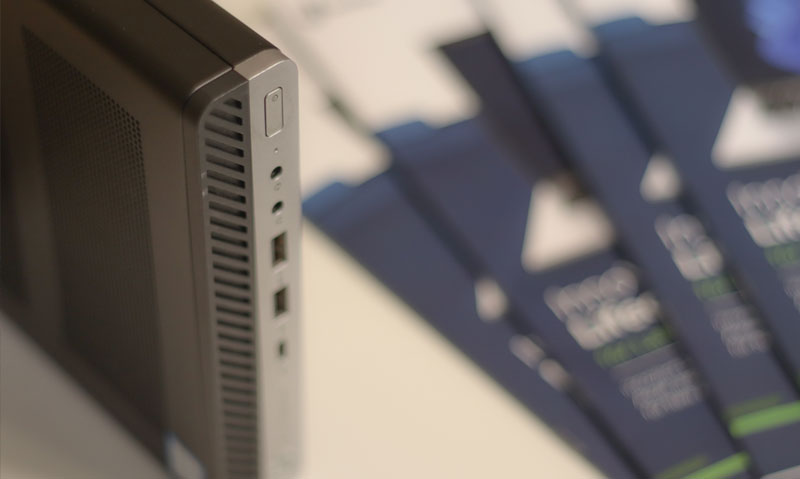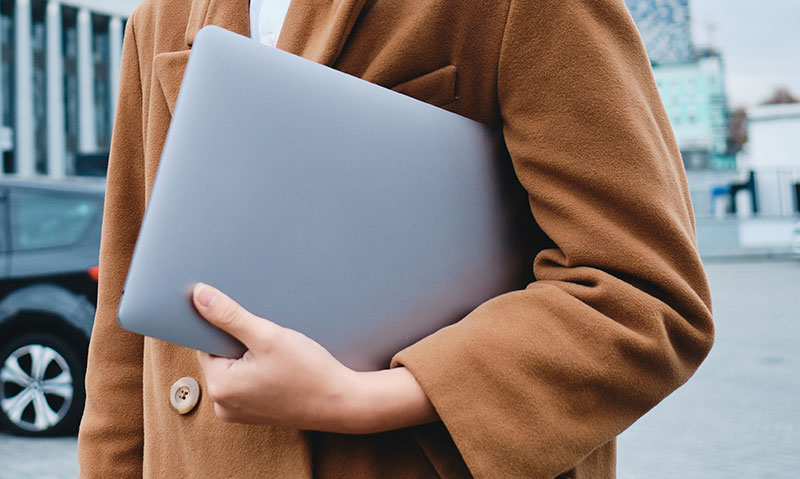Pros and Cons of thin and lightweight laptops

Over the last few years laptops have become the primary device used for working. Before, at least in the corporate world, they were usually reserved for specific departments or as backup devices.
Since 2020 the way of working has changed and more of us have migrated to a hybrid working model (or let's just say the current way of working) this change has led laptops to be the primary device with desktops moving to be the backup one.
As people began to use these devices more frequently, some issues began to appear. For example, working with a 13-inch screen for a few hours or a few times a week was fine, but if you now have to do it on a daily basis, it becomes uncomfortable and affects your productivity as well as your posture.
That’s why people are now preferring a 14” screen or 15”+, as described in our Linkedin Poll.

The other issue was related to the main point of this blog: the weight of these machines or to be more exact, the need for lightweight devices.
What are the pros and cons of lightweight laptops?
The pros of lightweight laptops
The pros of a lightweight device are easy to spot: they are usually very thin machines that can easily fit in a purse or small backpack. Their low weight makes them easy to carry on a daily commute and they look very nice aesthetically.
Currently manufacturers are aiming to produce machines right under the 1kg mark. This is achieved (among other things) by reducing the size of the bezel around the screen without compromising the size of the screen itself. So you end up with a smaller device but with the same screen size.
These new devices also tend to have longer life batteries.
The cons of lightweight laptops
A small con about lightweight devices is that in order to make them thinner, some manufacturers are dropping the ethernet port (RJ45) in newer models. This is a small inconvenience as it can be easily sorted by buying an adapter cable if you need to connect that way to the internet. But the truth is most people are using Wi-Fi when they work so it is not really a life changing issue.
Having said that…there is a big issue when it comes to these types of computers that is not so easy to spot…unless you look inside the machine. Something that becomes a big headache for every IT department: the soldered memory.

As we were mentioning before, to achieve thinner looking and lighter laptops manufacturers are removing ports, reducing the size of frame bezels and soldering different components onto the motherboard, including the memory. We would strongly recommend that our clients purchase laptops with spare memory slots or with a minimum of 16GB of memory due to the demands of video calling, Office 365 applications and new operating systems such as Windows 11 and Windows 12 (coming in 2024).
The issue soldering componentes onto the motherboard presents is that when one of these components breaks or starts to fail it is impossible to repair it and impossible to upgrade in the future. As a business it is fundamental to pick a product today that is going to be suitable for the future.
For us, it also means that these types of devices are not sustainable. A laptop that is destined to end up in landfill after only 3-4 years is just not acceptable any more.
As part of our 2nd Life proposition we make sure the equipment our clients choose is not only the right one for their business today but also is future-proof and can be upgraded to have a useful 2nd Life with another user, and potentially a 3rd life user too.
Learn more about our refurbished range of computers for businesses here.
We know that with the proper love and care, and the right refurbishment process of course, we can extend the useful life of devices. We trust our 2nd Life products so much that we even offer a full in life support.
Another Con about thin laptops is that they don’t match the end-user’s desire of having a bigger screen. Since, once again, to keep that small size and weight the screen needs to remain 13” or 14” at best. A bigger screen with a corresponding shrinkage in the protective bezel size also makes screen damage from being dropped more likely.
One alternative for this issue we have implemented with our clients is to offer their staff a large monitor to complement their small screen laptops. We recommend, when possible, 2x 24” monitors or a 27” monitor if space is limited.
Are you looking to refresh your IT estate this year? InnoVent can procure, lease and help you manage your entire IT estate in a cost-effective and efficient way. Contact us here for more information.
Related Blogs

How the cost of living crisis could bring Desktops PC back to life
For many years the industry has been foreseeing the end of the Desktop Computer...but the current cost of living crisis might change that.

Simple tips for improving laptop performance
Here are our top 5 tips for laptop care for optimum performance.
